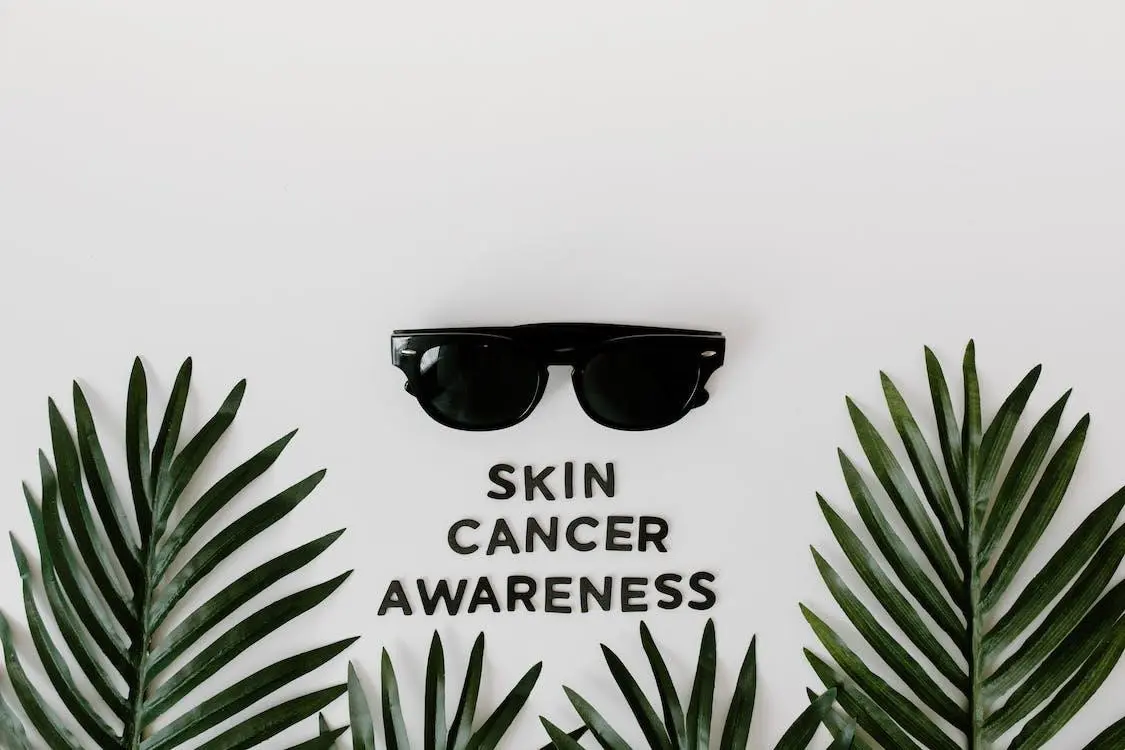
Skin cancer is a prevalent and potentially life-threatening disease when skin cells undergo abnormal growth. Let's look at the different types of skin cancer. Typically, when a skin cell grows old, it dies and is replaced by a new one. However, direct exposure to UV rays from the sun can disrupt the process, resulting in increased growth of new cells.
This abnormal cell growth can be cancerous or not. Early identification, proper diagnosis, and timely treatments are required to slow down the growth of cancer and ensure favorable outcomes. If not, skin cancer can spread to the tissues and affect other body areas. Fortunately, if detected and treated promptly, skin cancer can be cured. In this guide, we’ll discuss the seven types of skin cancer.
1. Basal Cell Carcinoma
As reported by the American Cancer Society (ACS), Basal Cell Carcinoma accounts for approximately 80% of all diagnosed skin cancer cases. While it is considered less aggressive compared to other types of skin cancer like Melanoma, Basal Cell Carcinoma still requires prompt attention and treatment due to its potential to cause local tissue damage and disfigurement.
Found in the lower epidermis, Basal Cell Carcinoma originates from the basal cells in the skin’s outermost layer. Risk factors that contribute to Basal Cell Carcinoma include UV exposure, genetics, fair skin, radiation exposure, immunosuppression, and exposure to arsenic.
Basal Cell Carcinoma typically presents as a slow-growing, painless bump or lesion on the skin regions exposed to the sun, especially the face, scalp, nose, eyelids, ears, arms, and legs. The appearance can vary, but common signs include:
- Waxy or pearly bumps.
- A flesh, scar-like brown colored lesion.
- A pink, slightly raised growth with a crusted center.
- An open sore that does not heal or bleeds, oozes, or crusts.
2. Squamous Cell Carcinoma
A form of cutaneous malignancy resulting from an excessive proliferation of squamous cells within the epidermal layer, Squamous Cell Carcinoma affects around 1.8 million individuals in the United States annually. While Squamous Cell Carcinoma is most commonly associated with skin cancer, it can also affect other areas with mucous membranes, such as the lungs, mouth, anus, esophagus, and cervix. There are primarily two types of Squamous Cell Carcinoma:
- Cutaneous Squamous Cell Carcinoma: Localized to the epidermis, this type of cancer is confined to the superficial skin layer (in situ).
- Metastatic Squamous Cell Carcinoma: This skin cancer can affect other areas of your body.
Symptoms and signs of Squamous Cell Carcinoma include:
- Abnormal growth or bump with a crusty, scalp-like top.
- The growth is higher and has a deep center that goes into the skin.
- A sore or wound that doesn’t heal.
- About 2.5 centimeters (1 inch) of red, scaly, and itchy skin.
- Pale or white spots on the tongue, cheeks, gums, or mouth.
- Lesions on the lower lip. This can cause the skin to become cracked, dry, and pale.
- Lump or bump that is scaly, itchy, and dry.
Your Squamous Cell Carcinoma treatment plan will vary depending on what stage you are on. Refer to the table below to learn about the five stages of Squamous Cell Carcinoma:
| Squamous Cell Carcinoma Stages | Characteristics |
| Stage 0 | This skin cancer only affects the epidermis, the top skin layer. |
| Stage 1 | The cancer extends to the top (epidermis) and middle (dermis) skin layers. |
| Stage 2 | The cancer spreads to the nerves and deeper skin layers (dermis, epidermis, and subcutis). |
| Stage 3 | The cancer has extended to the lymph nodes in the skin. |
| Stage 4 | The cancer has metastasized to distant sites within the body, affecting organs such as the brain, lungs, and liver. |
3. Melanoma
Meaning “black tumor,” Melanoma originates in melanocytes. These cells are responsible for producing melanin, the pigment that gives color to the skin, hair, and eyes. While most melanomas develop on the skin, they can also occur in the eyes and rarely in internal organs. The primary cause of Melanoma is prolonged exposure to ultraviolet (UV) radiation from the sun or tanning beds. However, genetics also play a significant role, as people with a family history of Melanoma are at a higher risk.
According to researchers, 30% of Melanoma cases begin from an existing mole that may seem harmless to you. This makes it essential for people to pay special attention to their skin and visit a dermatologist as soon as any changes or abnormalities are detected. Regular self-examinations of the skin are vital for early detection. The ABCDE rule helps individuals identify potential Melanomas:
- Asymmetry: Both halves of the skin are different.
- Border: Scalloped and uneven border.
- Color: Varied shades of black, brown, red, white, or gray.
- Diameter: Vary in size. Some may be smaller than 6mm.
- Evolving: Changing in color, shape, or size.
If a suspicious mole or spot is identified, a dermatologist can perform a biopsy for confirmation. Advanced techniques like dermoscopy and mole mapping aid in accurate diagnosis. The table below shows the five stages of Melanoma:
| Melanoma Stages | Characteristics |
| Stage 0 | The Melanoma resides solely within the uppermost skin layer, known as the epidermis. |
| Stage 1 | A primary melanoma with low-risk features and no signs of spreading. Typically, this stage can be effectively treated through surgery. |
| Stage 2 | While there is no evidence of spreading, discernible features suggest a high recurrence risk. |
| Stage 3 | The Melanoma has extended to adjacent lymph nodes or the surrounding skin. |
| Stage 4 | The Melanoma has disseminated to distant lymph nodes or skin areas, or it has invaded internal organs. |
Other Forms of Skin Cancer
Listed below are the lesser-known forms of skin cancer.
4. Kaposi Sarcoma
Unlike the previous three types, Kaposi Sarcoma is often associated with viral infections, particularly in individuals with weakened immune systems, like those with HIV/AIDS. It typically presents as purplish lesions on the skin or mucous membranes. While it's a slow-growing cancer, Kaposi Sarcoma can be aggressive in advanced stages.
5. Merkel Cell Carcinoma
Merkel Cell Carcinoma is a rare but aggressive skin cancer originating in Merkel cells, responsible for the sense of touch. Merkel Cell Carcinoma appears as a firm, painless nodule on the skin, usually in sun-exposed areas.
6. Sebaceous Gland Carcinoma
Sebaceous Gland Carcinoma is a rare and aggressive type of skin cancer originating in the sebaceous glands, which produce sebum to lubricate the skin and hair. It often appears as a painless, slow-growing nodule on the eyelid or other areas of the face.
7. Dermatofibrosarcoma Protuberans
Dermatofibrosarcoma Protuberans is a rare type of skin cancer originating in the skin's deep layers. It often manifests as a raised, firm, and flesh-colored nodule that may be mistaken for a scar. While Dermatofibrosarcoma Protuberans tend to grow slowly, it can be locally aggressive and invade nearby tissue.
Combat Skin Cancer – Partner with Suncoast Skin Solutions
Ready to fight cancer? Located in the heart of Florida, Suncoast Skin Solutions offers cutting-edge treatments, including SRT (Superficial Radiation Therapy). SRT offers a non-invasive and highly effective solution for Squamous Cell Carcinoma and Basal Cell Carcinoma. Our board-certified dermatologist will apply a topical anesthetic to the area that is to be treated. Once your skin is numb, radiation therapy will be used to treat the cancerous skin. With a team of experienced professionals dedicated to your well-being, we prioritize safety and results. Call us to schedule a consultation with the best dermatologist in Florida today!
SunCoast Skin Solutions Dermatology offices are located in Tampa / Hillsborough, St. Pete / Pinellas County, Brandon, Lutz, Winter Haven, Largo, Hudson, Leesburg, Jupiter, Lecanto, Riverview, Brooksville, Clearwater, Ocala, Palm Harbor, Daytona Beach, Sarasota, Punta Gorda, Seminole, (Inverness, Port Charlette, Port Saint Lucie coming soon), Florida. Contact us at 1-844-786-3376 or click here.

Recent Comments